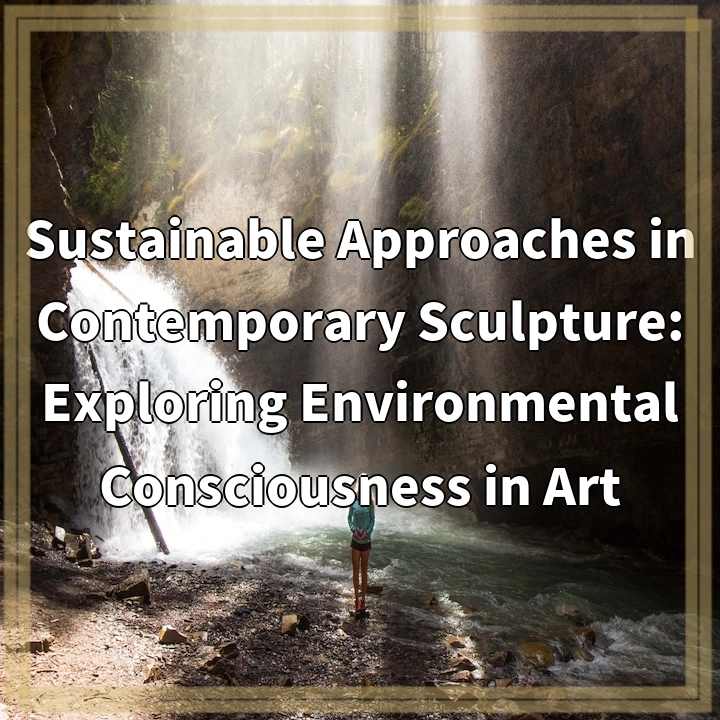
What it is:
Sustainable approaches in contemporary sculpture refer to artistic practices that prioritize environmental consciousness and ecological responsibility. These approaches aim to create sculptures in a way that minimizes negative impacts on the natural environment and promotes sustainability throughout the artistic process. From the choice of materials used to the production methods employed, sustainability is at the forefront of these artists’ creative decisions.
Real-World Problems:
While sustainable approaches in contemporary sculpture offer innovative solutions, they also address several real-world problems. These problems include:
1. Resource Depletion:
The traditional methods of sculpture often rely on the extraction of natural resources, such as metals, stones, and wood, leading to resource depletion and environmental degradation. Sustainable approaches seek to address these issues by sourcing materials responsibly and exploring alternative options, such as recycled or repurposed materials.
2. Waste Generation:
The creation of traditional sculptures can generate significant amounts of waste, including excess materials and hazardous byproducts. Sustainable sculptors aim to minimize waste through careful planning and efficient use of materials, as well as implementing recycling and waste management practices.
3. Climate Change Impact:
The art industry as a whole, including sculpture, contributes to greenhouse gas emissions through energy consumption, transportation, and exhibition practices. Sustainable approaches focus on reducing carbon footprints by adopting energy-efficient techniques, utilizing renewable energy sources, and considering the environmental impact of transportation and display of sculptures.
4. Chemical and Toxic Substances:
Traditional sculpting methods often involve the use of chemicals and toxic substances, such as adhesives, solvents, and paints, which can be harmful to the environment and human health. Sustainable artists prioritize the use of non-toxic, eco-friendly materials and seek out alternatives to minimize the negative impact on ecosystems and society.
By addressing these real-world problems through sustainable approaches, contemporary sculptors contribute to the broader movement of environmental consciousness in art, inspiring viewers to reflect on their own relationship with the environment and promote positive change.

Solutions for Sustainable Approaches in Contemporary Sculpture:
Sustainable approaches in contemporary sculpture offer solutions to address the real-world problems associated with traditional sculpting methods. Here are some key solutions:
1. Responsible Material Sourcing:
Sustainable sculptors prioritize responsible material sourcing by using materials that have minimal environmental impact. This includes utilizing recycled or repurposed materials, choosing renewable resources, and considering the lifecycle of materials to minimize resource depletion.
2. Waste Reduction and Management:
Sustainable sculptors aim to minimize waste generation throughout the artistic process. They employ efficient production methods, careful planning, and responsible material usage to reduce excess waste. Recycling and proper waste management practices are also implemented to ensure minimal environmental impact.
3. Carbon Footprint Reduction:
To mitigate the contribution to climate change, sustainable sculptors take measures to reduce their carbon footprints. This includes using energy-efficient techniques in the sculpting process, utilizing renewable energy sources, and considering the environmental impact of transportation and exhibition practices.
4. Use of Non-Toxic Materials:
Sustainable sculptors prioritize the use of non-toxic, eco-friendly materials to minimize harm to both the environment and human health. They seek out alternatives to traditional chemicals and toxic substances, opting for safer adhesives, paints, and solvents.
By implementing these solutions, sustainable approaches in contemporary sculpture promote environmental consciousness and contribute to a more sustainable and responsible art industry. These practices not only address real-world problems but also inspire viewers to consider their own environmental impact and support positive change.















